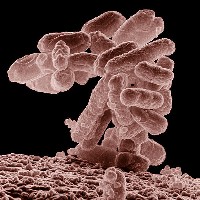Researchers at University of Copenhagen in Denmark and University of British Columbia in Canada developed and tested in the lab a substance they say quickly and effectively kills multiple types of bacteria, including those resistant to current antibiotics. The team led by Copenhagen’s Henrik Franzyk and UBC’s Robert Hancock published their findings last week in the journal Chemistry & Biology (paid subscription required).
The new substance, called host defense peptidomimetic 4 or HDM-4 is generated from natural antimicrobial peptides in the body, formed as part of the human immune system. Lead author and doctoral candidate Rasmus Jahnsen worked on optimizing this type of antibacterial substance to develop a new class of antibiotics.
Jahnsen, in a University of Copenhagen statement, says the peptide both kills bacteria and supports the body’s natural immune defenses against infection. “The killing mechanism involves destabilizing the bacterial membrane and binding onto the bacteria’s DNA, which in both cases results in the death of the bacteria,” says Jahnsen. “We have also shown that the substance can activate the human body’s own immune cells, strengthening its defense against bacteria during infection.”
In tests with lab cultures, the researchers found HDM-4 exhibited lethal antibacterial power against E. coli and other gram-negative bacteria, the kind of microbe causing pneumonia, blood stream, and surgical site infections in health care settings. HDM-4 was also effective in killing biofilms, collections of bacteria that form complex communities. Because of its ability to both penetrate the bacteria and attack its DNA suggests HDM-4 would less likely lead to a resistant form than a traditional single-target antibiotic.
The published research, Jahnsen notes, represents early-stage lab tests and more work lies ahead. “We hope that in collaboration with partners we can conduct a series of tests in the near future to show that the substance can actually combat an infection in a mammal,” he says. “If we achieve the same results in animals, we will have a potential sensation on our hands.”
Read more:
- Network Analysis Shows Drug Resistant Infection Factors
- Challenge Seeks Point-of-Care Staph Bacteria Detector
- Silver Improves Antibiotic Performance Against Bacteria
- NIH Funding Antibacterial Resistance Clinical Research Net
- Antibiotic Resistance Biosensor Developed for Staph Bacteria
* * *


 RSS - Posts
RSS - Posts
You must be logged in to post a comment.